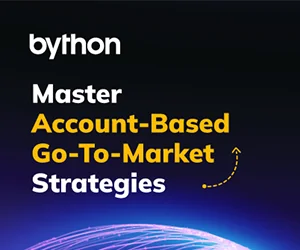Financial technology companies, commonly referred to as fintechs, typically focus on a subset of financial services. However, they have stepped up their game and now represent a formidable threat to conventional institutions. These (mostly smaller or niche) businesses are bringing financial services to the fingertips of every user, an achievement that traditional banks have yet to match — beyond a fixed marketplace.
Despite the popularity of fintechs in the present day, customers still want more.
At a time when most of us juggle multiple apps between work, utilities, and personal life, user needs have changed. Consequently, fintechs are gravitating towards a centralized portal, a single platform from which every service can be accessed and executed. Research suggests that 72% of users would be interested in this new category of fintech offerings.
Users would like fintechs to develop applications that act as a commercial marketplace, allowing customers to spend money and earn access to insurance, trading, digital currencies, and various other services. This has led to the rise of “super apps.”
Understanding The Meaning of Fintech Super Apps
A super-app is a sort of umbrella app that provides a comprehensive ecosystem of services customized to the everyday tasks and personal needs of users via a single interface or platform. It generally involves an inventory of third-party offerings that are fully incorporated into the ecosystem at large and makes use of massive quantities of data to engage users and offer a broad range of experiences and functions.
In essence, we are looking at an online platform that delivers personalized experiences through a collection of mini-apps that are relevant to the company’s target audience.
A hyper app could be described as the Swiss Army Knife of fintech applications. In principle, the user would be able to access the platform and carry out a range of jobs without ever needing to go to a different website.
An example of such an app would be one that offers budgeting services, allows users to pay taxes, and administers insurance policies. It is genuinely multidimensional and not solely an amalgamated mobile application or online platform. As frameworks for delivering modular mini-apps which consumers can use for personalized app experiences, super apps are created as platforms that can house several micro-functionalities.
Data from user behavior in one module will influence how fintech services are delivered in a different module of the super app, which is what differentiates it from a simple service bundle.
The Driving Force Behind Fintech Super Apps
As app usage has turned into a habit for many consumers, they now prefer to complete all their tasks online — preferably on their smartphones. This includes banking, attending meetings, or scheduling transportation, among other activities. This has made it possible for super-apps to bring together a market that is now too big and complicated for most users to navigate effectively.
The advantage of fintech mega apps is that they provide one central location for multiple categories of online financial transactions. It is far more convenient to open a single superapp than to manage dozens of individual applications.
Additionally, by providing loyalty rewards, fintechs push users to make more transactions on the superapp.
Another way fintechs can make these super apps super “sticky” is through data. User behavior is constantly monitored, and this data is used to fuel new offers, incentives, and fintech service recommendations. Finally, gamifying the UX is a common theme with fintech super apps, which ties it all together.
How Fintech Super Apps Will Reshape Banking
Superapps incorporate financial services into their platforms to offer consumers seamless experiences. As a result, a growing number of individuals may bypass financial applications in favor of the superapp, which is much more integrated.
Additionally, super-apps with digital currencies make it easier for users to stay within the super-app environment and decrease their reliance on credit cards and cash.
Some banks have already been part of the super-app ecosystem by offering unbranded “banking as a service” to the apps, thereby enabling this seamless integration.
The regulatory framework surrounding financial services is so complicated that many super-apps are reluctant to navigate it on their own, particularly across various sectors and regulatory authorities. This indicates that super apps offering e-commerce, financing, insurance solutions, investing channels, or other services are building strategic partnerships with fintechs and banks in their core markets — only helping to offer these services.
While super apps provide stiff competition to traditional banks now going digital, partnerships like this will prove crucial. Banks do not always have the digital know-how to build fully integrated, gamified, and data-driven user experiences. Conversely, regulatory compliance and infrastructure might come easier to banks than fintechs, making it a natural alliance.
Examples of Fintech Super Apps
Gojek in Indonesia or Grab in Southeast Asia are instances of global mega applications, but the most widely recognized is WeChat from China. WeChat is not just a universal communication app; it can also be used to pay for products and services and schedule transportation.
PayPal is often credited as the very first non-Chinese firm to develop a super app, but several others are also engaged in similar initiatives.
Walmart, the retail giant with more than 150 million individual U.S. customers per month, joined the fintech mega app market in 2022. In order to introduce its own super app, ONE, the company absorbed Even Responsible Finance and neobank ONE Finance. Popular digital-native fintechs, such as Revolut and Square, are currently pursuing the creation of hyper applications.
Getting Started with Super Apps
There are numerous methods for creating and rolling out a fintech superapp. The first choice is to create everything in-house. It calls for the recruitment and training of expensive expert teams.
The alternative is to use pre-existing software elements, reusing them as necessary and closing in any spaces with fresh code, which is the strategy adopted by a number of fintechs with thriving codebases.
A third alternative is to collect APIs from outside vendors and combine them internally. This reduces development time, but frequently at the cost of stability, as these tools were most likely not meant to work together. Banks going digital sometimes take this route as it appears to provide a good balance between control and convenience.
Choosing a tactical API provider for your entire end-to-end development is a unique approach that has only just become available. Integrations with various API providers require far less effort, and regular maintenance and support are way more responsive and efficient. This trend is known as fintech as a service, which can be a powerful driver for super app development.
The Bottom Line
In 2009, Apple promoted the expression, “There’s an app for that.” Since that time, apps (single-use applications) have grown exponentially and have transformed into a vital element of daily life. But a new category of app is growing in popularity — and it poses a threat to market share dominance. The “super-app” is fast becoming a significant disruptor in the digital financial services environment as well as in the online marketplace.
However, a few concerns remain. In some cases, there may be a lack of consumer trust regarding the collection of data, without which the personalization factor of super apps will fail. Some customers may also tend towards best-of-breed behavior, installing multiple super apps but only using select features from each one.
Thanks to open banking architecture and embedded finance, it is now possible to deliver high-quality super app experiences to customers. For fintech firms to genuinely stand out, variables such as customer knowledge, trust, and market specialization will get increasingly important.




